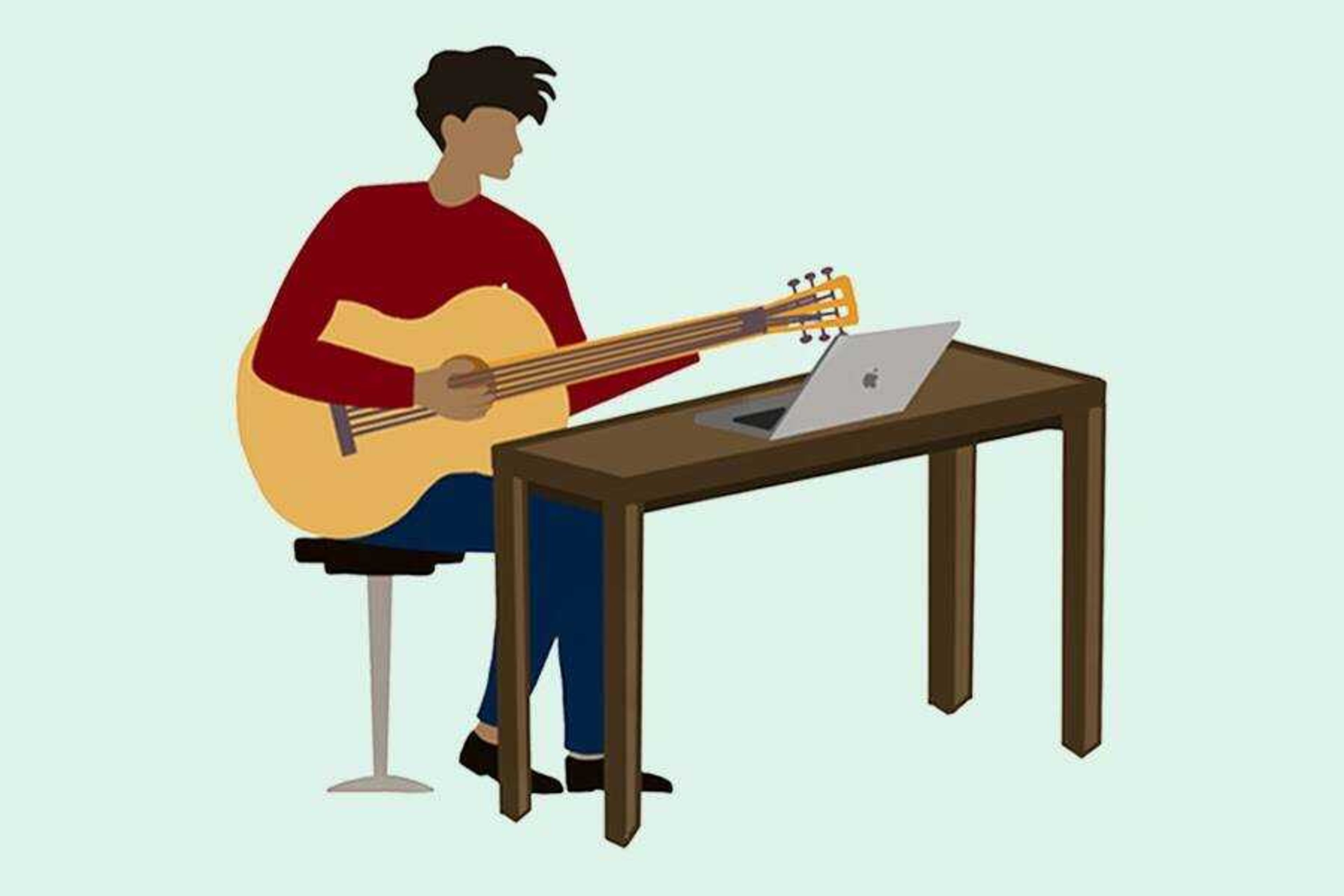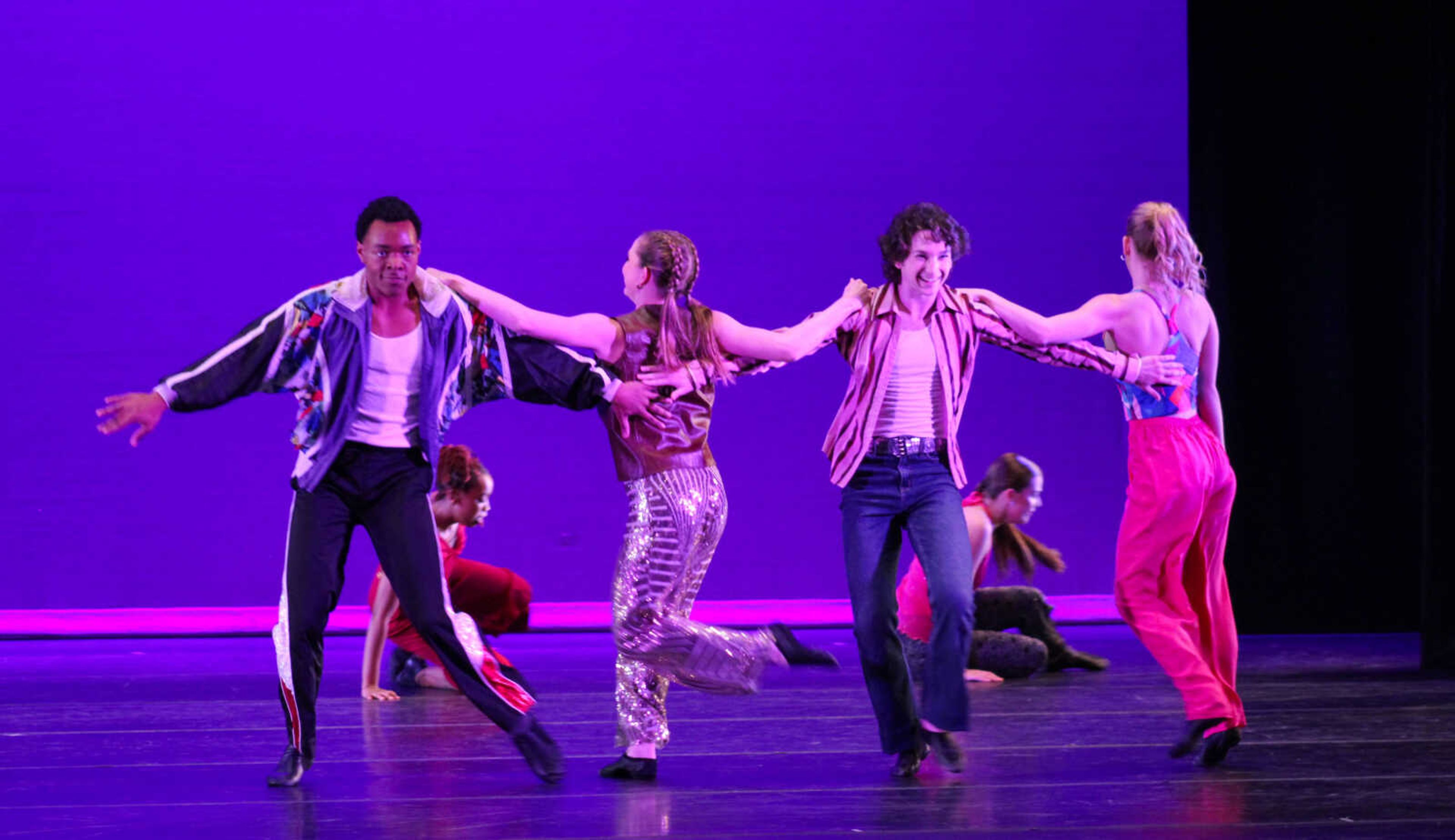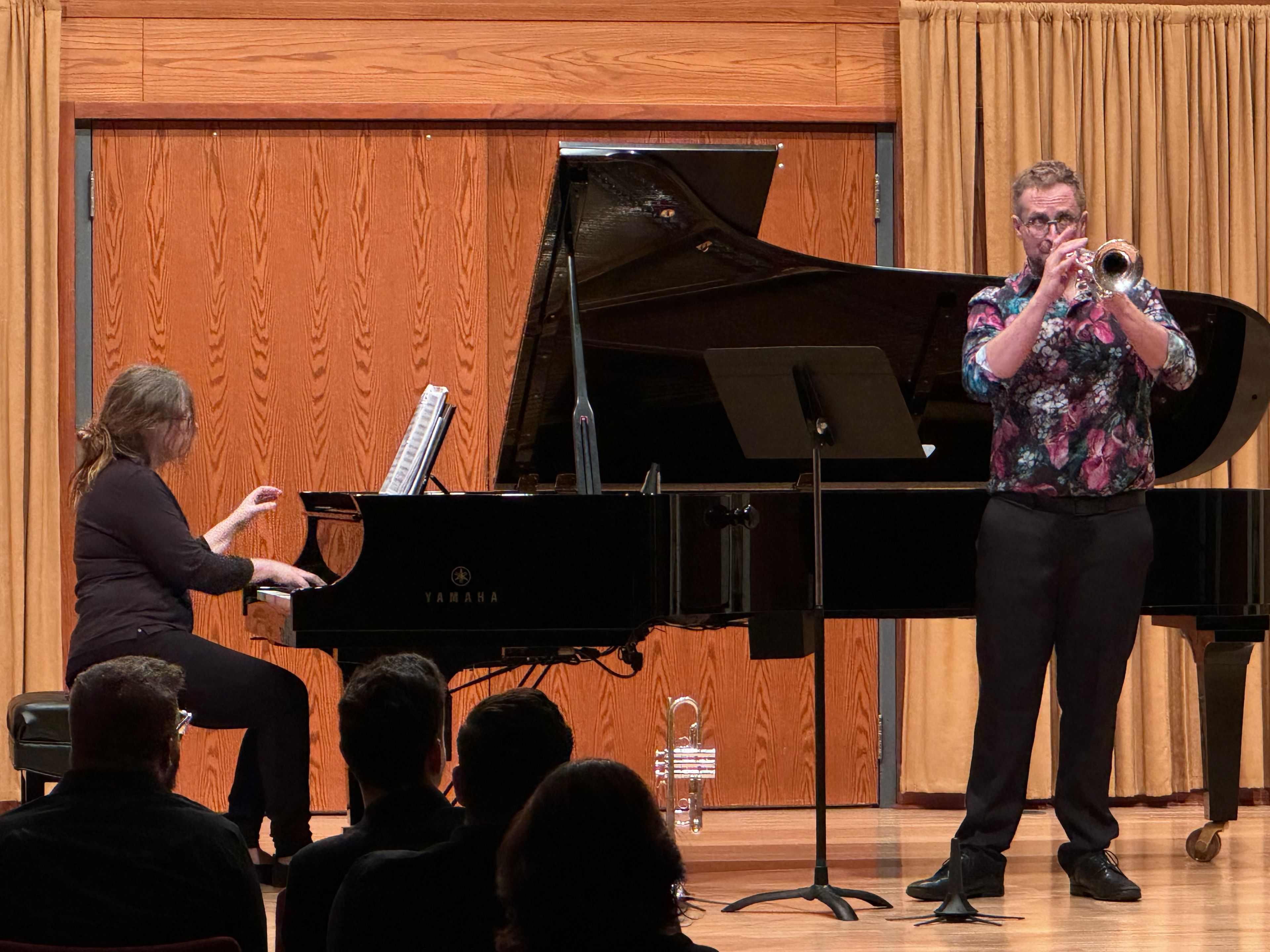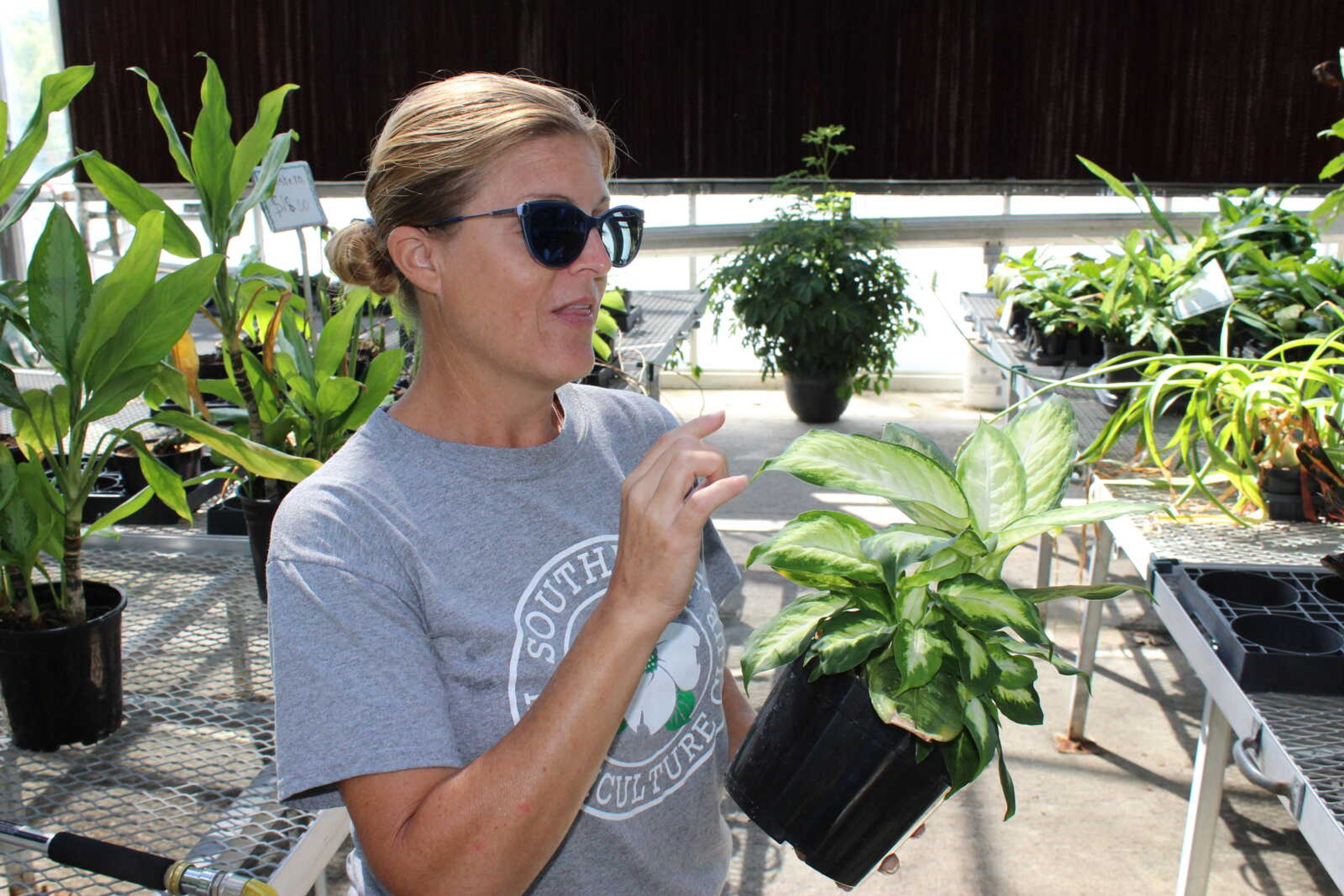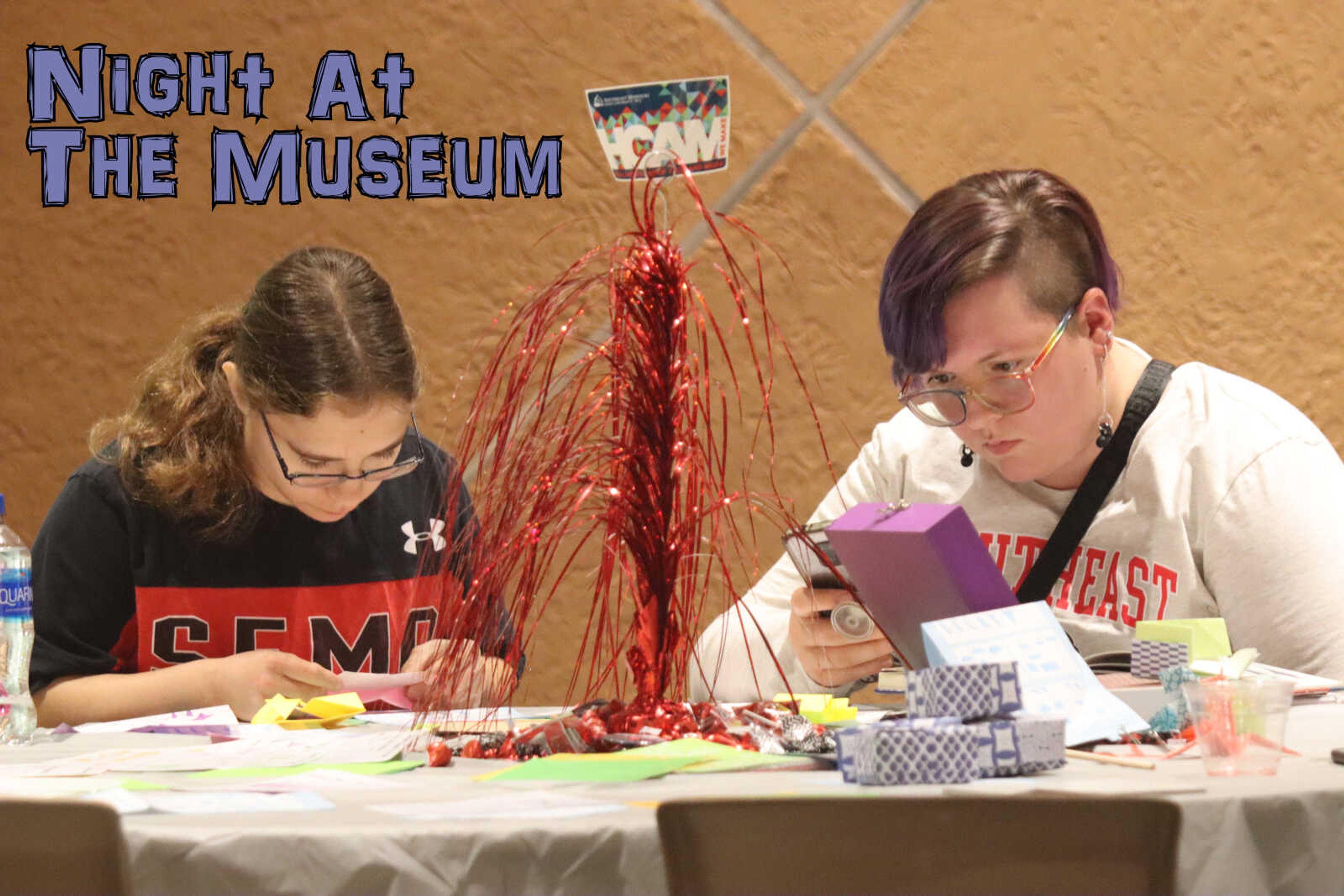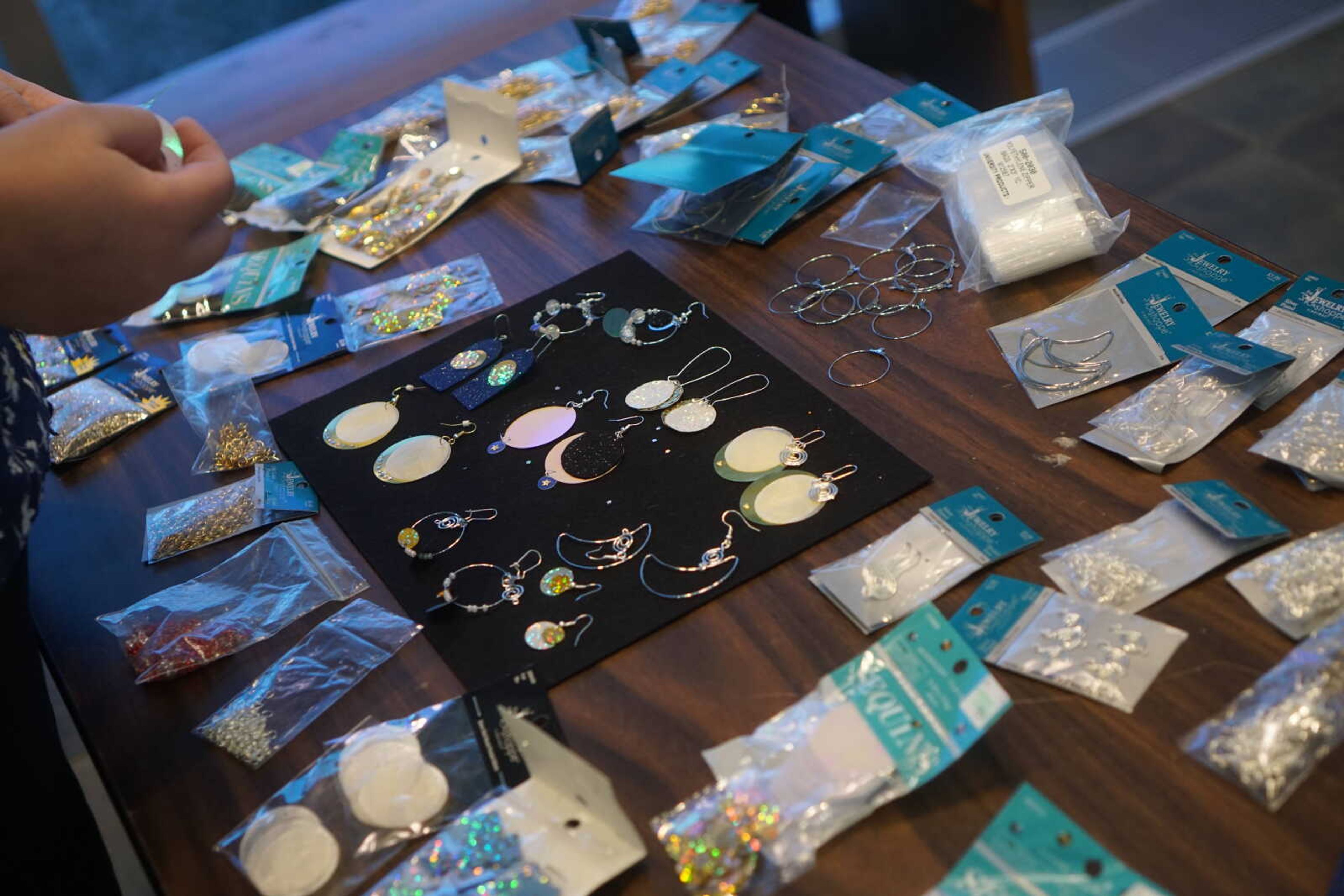The virus: A new normal for music students and their instructors
Students who study music live to play their instruments. However, their normal way of playing and their professors' teaching styles have had to be adjusted due to COVID-19.
Students who study music live to play their instruments. However, their normal way of playing and their professors' teaching styles have had to be adjusted due to COVID-19.
Music lessons provide a physical space for students to learn directly from their instructors. The benefit of this is the ability to learn correct technique, to hear accurate pitches and to understand visually. Students can see the exact fingering on a guitar fret, how to play an E through the reed of a clarinet correctly, or how to properly hold the instrument in hand.
But what is happening now because of COVID-19? Most lessons have been transitioned to blended courses.
Gabrielle Baffoni, associate professor of music for single reeds, said when COVID-19 first hit in March, she had some levels of panic.
“So, the initial thought was, how are we ever going to do this remotely? How can this possibly, you know, work?” Baffoni said.
Now, she has implemented new protocols in lessons and has reevaluated her teaching styles.
Baffoni said this semester, she designs her lessons in a variety of styles.
“I'm teaching in classroom spaces which are much more limited in availability,” Baffoni said. “So, I'm teaching a combination of in-person small group lessons in larger spaces, individual face-to-face lessons and individual Zoom lessons.”
In the music lessons, the masks designed for musicians to wear while playing can create some difficulties. However, she still prefers in-person classes due to the sounds resonating more clearly and being there with the student.
Woodwind instruments use more air for movement and require certain rules to be followed in the playing rooms.
“We have limited our wind playing rehearsals and lessons to 30 minutes at a time,” Baffoni said. “Then the room before that and after that is to be sitting empty for 30 minutes, which further, you know, exacerbates the problem of space, because you have to leave a half an hour in between everything that you do.”
While teaching someone how to play their instrument correctly can be challenging, Baffoni said she found she is more conscious of how to explain things verbally since there is a limitation to how close you can be to the student.
“I will try to use demonstrations, to show them on my own instruments and have them mirror that sometimes. It's just kind of trial and error of trying to explain it from six feet away,” Baffoni said.
Patrick Rafferty, guitar instructor and adjunct faculty member, has experienced the changes due to the virus in different ways.
Rafferty said his initial reaction to online learning led him to an immediate scramble. He still wanted to meet his own needs as an instructor and the needs of the students.
“It was a game changer. It forced everybody to figure out, you know, how they were going to deal with the new reality, I guess,” Rafferty said.
Rafferty has been working with platforms such as Zoom and FaceTime. With the required protocols, he has been able to do half in-person and half online lessons, which have worked in his favor as a traveling instructor already.
While there is a downside to Zoom since he is unable to effectively demonstrate how to play the instrument to a student, Rafferty said he has found more effective ways with the online platform.
“I think that kind of one thing that I found surprising about Zoom is that when I'm sharing a screen with someone, I'm able to identify really specific moments in music by using the cursor. It's the ability to really key in on like just very specific moments is almost more effective than trying to do it in-person,” said Rafferty.
He said he has found some struggles with taking on younger students to learn guitar, but has found utilizing technology very convenient and effective with younger and older adults.
While the safety guidelines are less strict than a woodwind instrument, string instruments and others still follow the basic rules of the guidelines mandated by the University.
“To be more specific, as it applies to guitar, I require everyone to wear masks; we sit probably 10 feet away from each other at all times. I'm always sure to use disinfectant and try to wipe down stands and stuff in between lessons,” Rafferty said.
Both Baffoni and Rafferty said they still want to continue to use some of the benefits of technology in their lessons with their students even after the pandemic is over.
